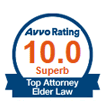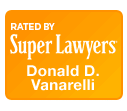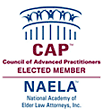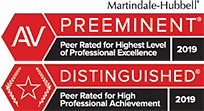The Department of Veterans Affairs’ (VA) pension program is intended to provide money benefits to wartime veterans in financial need. It is available to veterans aged 65 and older and those with non-service connected disabilities, as well as to their surviving spouses and dependent children. To be eligible for VA pension benefits, a claimant must meet income and asset requirements. In addition, applicants who exceed the financial limits but have substantial care costs can also qualify for benefits. These tax-free VA pensions can pay a recipient more than $20,000 a year. (I’ve written about the VA’s pension benefit program and the requirements for the Aid and Attendance and Housebound supplements many times on this blog.)
Unlike the rules governing other needs-based federal and state programs for the financially needy, transferring assets to qualify for VA pension benefits is not illegal under current rules. Asset transfers or gifts made prior to the date of application for VA pension benefits do not have any impact on eligibility. As a result, the number of applicants approved for Aid and Attendance benefits has grown sharply, to 38,000 in 2011, up from 22,500 in 2006.
After a year-long investigation, the U.S. Government Accountability Office (GAO) recently issued a report concluding that VA pension claimants with excess assets often qualify for the VA’s Aid and Attendance and other pension benefits by transferring assets immediately before applying for benefits. GAO also identified about 200 organizations across the country marketing financial and estate planning services to help veterans and others with excess assets qualify for pension benefits.
The agency recommended that Congress establish a look-back and penalty period for pension claimants who transfer assets for less than fair market value prior to applying for pension benefits, rules similar to those governing the Medicaid program and other means-tested programs. The New York Times reported that a bipartisan group of senators plans to introduce legislation giving the VA look-back authority.
The GAO also found that some companies were providing products and services such as annuities that were potentially unsuitable for the elderly because the funds would be unavailable during their expected lifetimes without high withdrawal fees.
The GAO’s full report is attached here – GAO Report on Veterans’ Pension Benefits
New York Times article summarizing the abuses in the Veterans’ Pension Program discovered by the GAO is attached here – NYTimes Article on Veterans’ Pension Abuses
Here is a link to the website of the U.S. Senate Special Committee on Aging where readers can view the hearing entitled “Pension Poachers: Preventing Fraud and Protecting America’s Veterans” – Veterans’ Hearing
UPDATED ON JUNE 8, 2012: On June 6, 2012, Sen,. Wyden (D-OR) introduced a bill in the Senate (S.3270) for the VA “to consider the resources of individuals applying for pension that were recently disposed of by the individuals for less than fair market value when determining the eligibility of such individuals for such pension.” The bill was submitted as a result of the above described GAO report critical of veterans with excess resources being able to qualify for VA pension benefits by transferring assets prior to applying. The text of the bill is available here – Draft VA Pension Benefit Lookback Bill
UPDATED ON JUNE 13, 2012: The Senate bill is now posted on the Library of Congress website here: Bill Text, S. 3270. Some of the key points in the Senate bill include: (1) A lookback period of 36 months, beginning on the date of application; (2) A period of ineligibility for gifts, or transfers of assets made during the lookback period for less than fair market value, including transfers to trusts, or purchases of annuities or other financial products; (3) A method of calculating the length of the ineligibility period resulting from a transfer of assets for less than fair market value made during the lookback period, as follows: the value of the transferred assets divided by the value by the monthly pension amount the applicant would have received but for the gift equals the number of months of ineligibility resulting from the gift; and, (4) The ability to fully cure a gift.
Categories
- Affordable Care Act
- Alzheimer's Disease
- Arbitration
- Attorney Ethics
- Attorneys Fees
- Beneficiary Designations
- Blog Roundup and Highlights
- Blogs and Blogging
- Care Facilities
- Caregivers
- Cemetery
- Collaborative Family Law
- Conservatorships
- Consumer Fraud
- Contempt
- Contracts
- Defamation
- Developmental Disabilities
- Discovery
- Discrimination Laws
- Doctrine of Probable Intent
- Domestic Violence
- Elder Abuse
- Elder Law
- Elective Share
- End-of-Life Decisions
- Estate Administration
- Estate Litigation
- Estate Planning
- Events
- Family Law
- Fiduciary
- Financial Exploitation of the Elderly
- Funeral
- Future of the Legal Profession
- Geriatric Care Managers
- Governmental or Public Benefit Programs
- Guardianship
- Health Issues
- Housing for the Elderly and Disabled
- In Remembrance
- Insolvent Estates
- Institutional Liens
- Insurance
- Interesting New Cases
- Intestacy
- Law Firm News
- Law Firm Videos
- Law Practice Management / Development
- Lawyers and Lawyering
- Legal Capacity or Competancy
- Legal Malpractice
- Legal Rights of the Disabled
- Liens
- Litigation
- Mediation
- Medicaid Appeals
- Medicaid Applications
- Medicaid Planning
- Annuities
- Care Contracts
- Divorce
- Estate Recovery
- Family Part Non-Dissolution Support Orders
- Gifts
- Life Estates
- Loan repayments
- MMMNA
- Promissory Notes
- Qualified Income Trusts
- Spousal Refusal
- Transfers For Reasons Other Than To Qualify For Medicaid
- Transfers to "Caregiver" Child(ren)
- Transfers to Disabled Adult Children
- Trusts
- Undue Hardship Provision
- Multiple-Party Deposit Account Act
- New Cases
- New Laws
- News Briefs
- Newsletters
- Non-Probate Assets
- Nursing Facility Litigation
- Personal Achievements and Awards
- Personal Injury Lawsuits
- Probate
- Punitive Damages
- Reconsideration
- Retirement Benefits
- Reverse Mortgages
- Section 8 Housing
- Settlement of Litigation
- Social Media
- Special Education
- Special Needs Planning
- Surrogate Decision-Making
- Taxation
- Technology
- Texting
- Top Ten
- Trials
- Trustees
- Uncategorized
- Veterans Benefits
- Web Sites and the Internet
- Webinar
- Writing Intended To Be A Will







Vanarelli & Li, LLC on Social Media